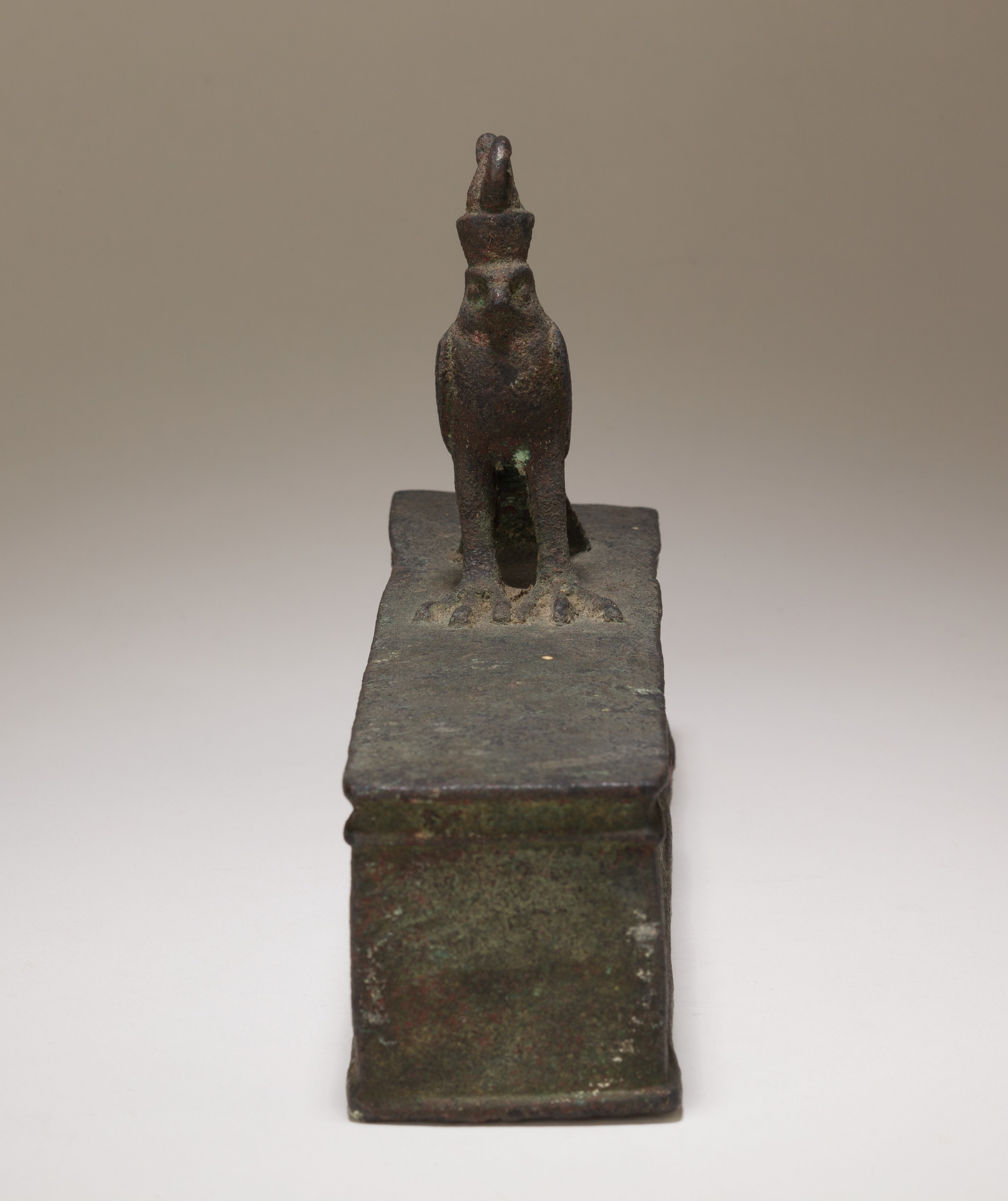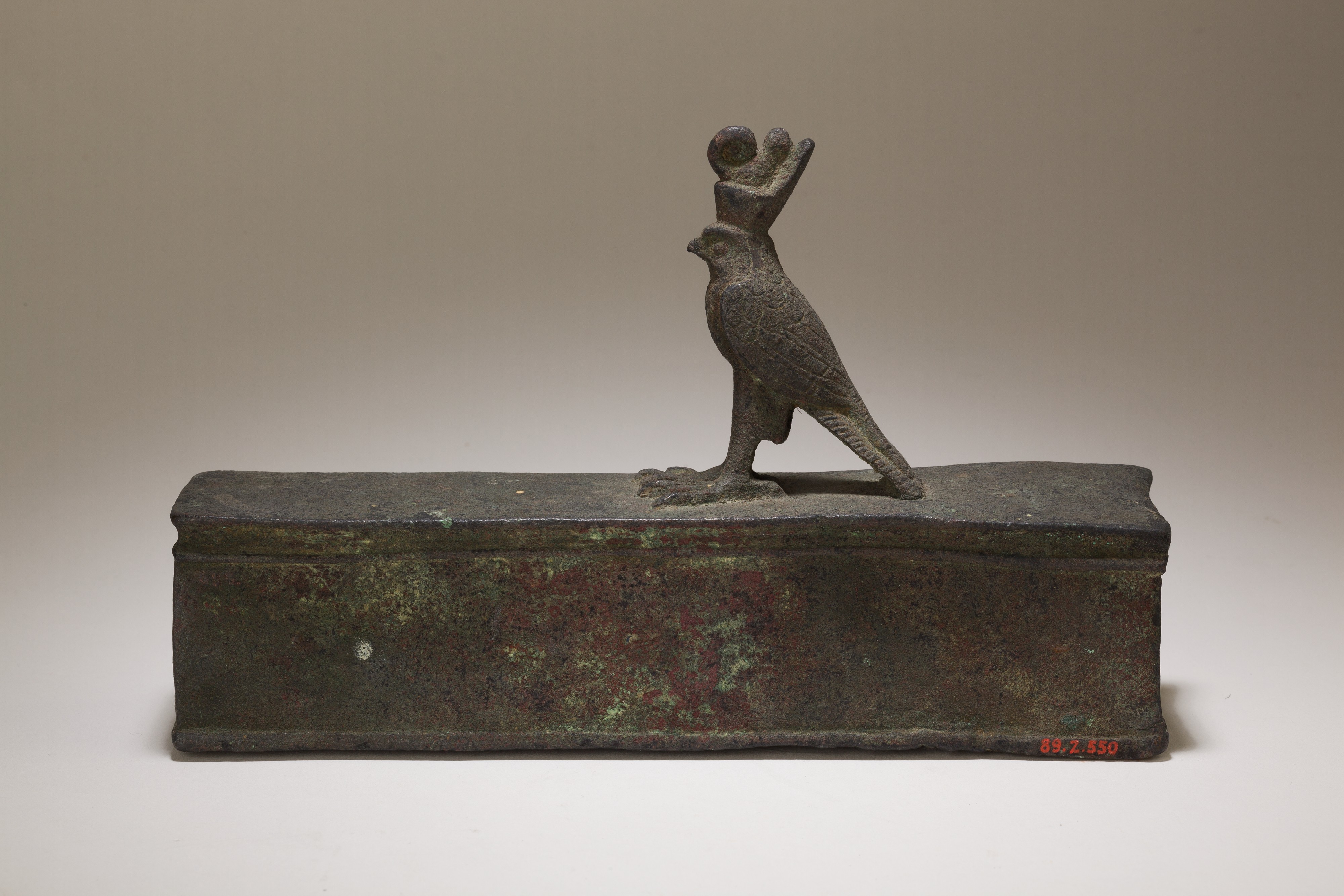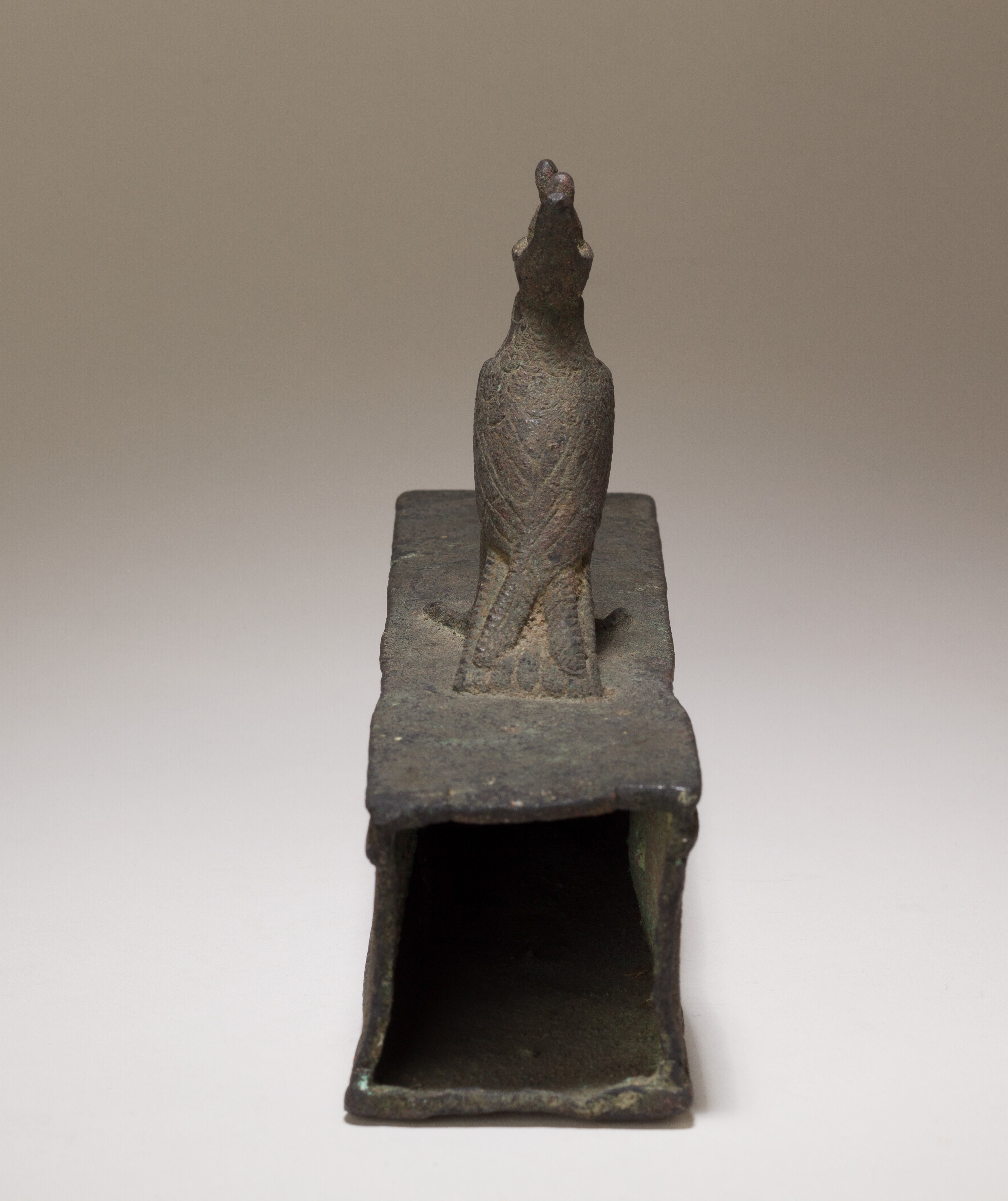Case for an animal mummy topped by a falcon
Late Period–Ptolemaic Period
Not on view
The falcon god Horus stands with his wings swept back. He has a prominent beak, large rounded eyes, and a strong brow, which supports the double crown of Egypt. This royal crown symbolizes the union of Lower and Upper Egypt, and highlights Horus’ role as the legitimate ruler of the entire land. On this particular figure, the crown’s elements are closely modeled together but are still distinct: the red crown of Lower Egypt, complete with its curling spiral at the front, and the white crown of Upper Egypt. The falcon wears the double crown because Horus and the concept of kingship were closely tied, as early as the Predynastic Period.
The falcon stands on a rectangular receptacle that would have held an animal mummy. The back end is open where the mummy, now lost, would have been inserted. Such falcon mummy boxes, or sarcophagi, would have been offered for deposition in animal necropoleis, not just in relation to the cult of Horus, but also more broadly in association with solar cult.
Due to rights restrictions, this image cannot be enlarged, viewed at full screen, or downloaded.
This artwork is meant to be viewed from right to left. Scroll left to view more.





